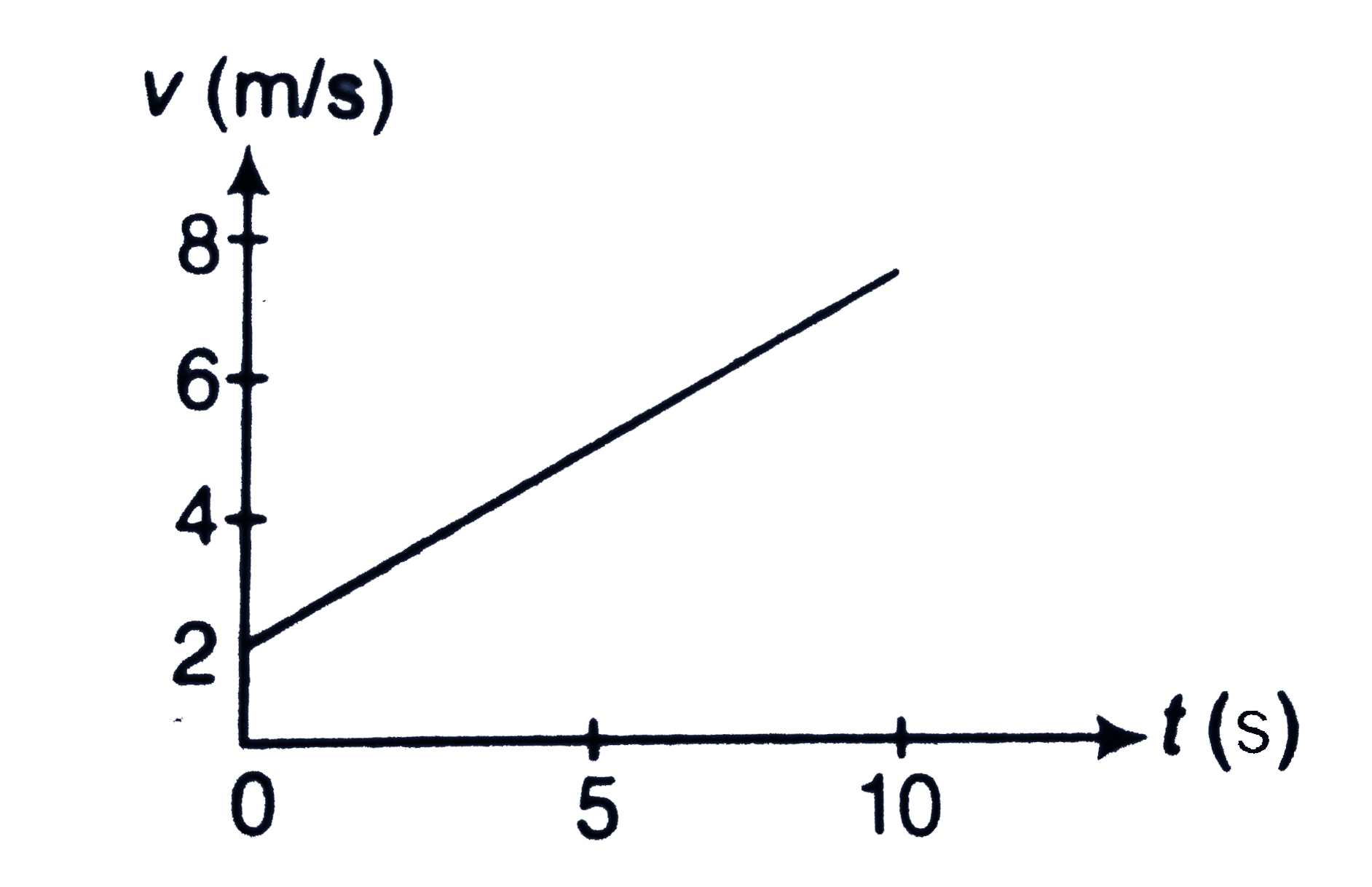Give an example of motion with
(i) acceleration a=0 and velocity v≠0
(ii) displacement = 0 and distance travelled = 0
(i) Uniform velocity
(ii) A stone thrown up and coming back to initial point.
Topper's Solved these Questions
- DESCRIPTION OF MOTIONBook:CENGAGE PHYSICSChapter:DESCRIPTION OF MOTIONExercise:MANDATORY EXERCISE (EXERCISE SET - III)
Explore 12 Videos
- DESCRIPTION OF MOTIONBook:CENGAGE PHYSICSChapter:DESCRIPTION OF MOTIONExercise:CONSOLIDATED EXERCISE (COMPREHENSION)
Explore 7 Videos
- DESCRIPTION OF MOTIONBook:CENGAGE PHYSICSChapter:DESCRIPTION OF MOTIONExercise:MANDATORY EXERCISE (EXERCISE SET - I)
Explore 22 Videos
- ELASTICITYBook:CENGAGE PHYSICSChapter:ELASTICITYExercise:OLYMPIAD AND NTSE LEVEL EXERCISES
Explore 10 Videos
Similar Questions
A body describes simple harmonic motion with an amplitude of 5 cm and a period of 0.2s. Find the acceleration and velocity of the body when the displacement is (a) 5cm, (b) 3cm, (c) 0 cm.
View SolutionFig. shows the graph of velocity versus time for a partice going along the x-axis. Find (a) acceleration, (b) the distance traveled in 0→10s and (c) the displacement in 0 to 10s.

View Solution
Knowledge Check
A particle is executing SHM with amplitude A, time period T, maximum acceleration a0 and maximum velocity V0 and at time t, it has the displacement A/2, acceleration a and velocity V then
At=T/12Ba=a0/2Cv=v0/2Dt=T/8Assertion : A body is moving along a straight line such the its velocity varies with a time as shown in figure. Magnmitude of displacement of the body from t = 0 to t = 12 s is the same as the distance travelled by it in the given time duration.

Reason : For unidirectional motion of a body,
|displacement|=distanceAIf both Assertion and Reason are correct and Reason is the correct explanation of assertion.BIf both Assertion and Reason are correct but Reason in not the correct explanation of Assertion.CIf Assertion is true but Reason is false.DIf Assertion is false but Reason is true.The velocity of a particle moving in a straight line varies with time in such a manner that v versus t graph is represented by one-half of an ellipse. The maximum velocity is vm and the total time of motion is t0
(i) average velocity of the particle is π4vm
(ii) such motion cannot be realized in practical terms.
 Aonly (i) is correctBonly (ii) is correctCboth (ii) and (ii) are correctDboth (i) and (ii) are wrong
Aonly (i) is correctBonly (ii) is correctCboth (ii) and (ii) are correctDboth (i) and (ii) are wrong
Give example of a motion where x>0,v<0,a> at a particular instant.
View SolutionA body starts from rest with uniform acceleration. Its velocity after 2n second is v0. The displacement of the body in last n second is 3v0nβ. Determine the value of β?
View SolutionA particle is moving in sand under acceleration a=g−λy2, where lambda is a positive constant and y is the distance traveled on the y-axis. If the initial velocity is v0 and after traveling a distance ym, the particle stops, find λ (the motion is along the y-axis).
View SolutionWhat type of velocit-time graph will you get, for a unitormly accelerated motion when
(i) acceleration is + ve (a gt 0)and <br>(ii)ae≤rationis-ve (a- lt0) ?
View Solutionfigure
 shows the graph of velocity versus tie for a particle going along the X-axis. Find a. the acceleration, b. The distance travelled in 0 to 10 s and c. the displacement in 0 to 10 s.
shows the graph of velocity versus tie for a particle going along the X-axis. Find a. the acceleration, b. The distance travelled in 0 to 10 s and c. the displacement in 0 to 10 s.
View Solution
